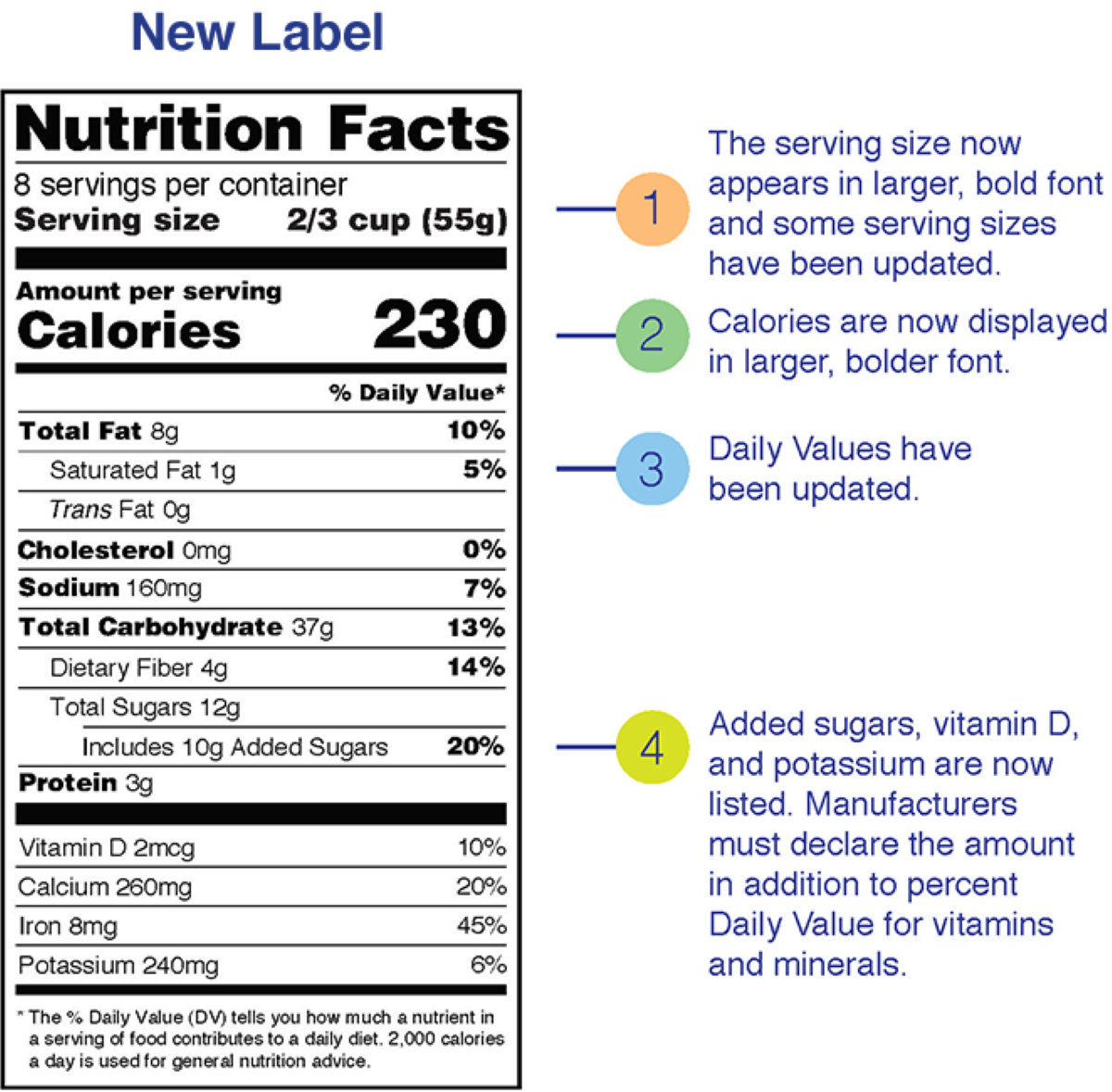The familiar “nutrition facts” label featured on the side of food and beverage containers has been updated with new requirements by the FDA based on the latest scientific and nutrition research. What you need to know.
The “Nutrition Facts” label seen on the side of food and beverage containers has gotten a major reworking, the first major update in over twenty years, as the US Food and Drug Administration (FDA) is requiring changes based on updated scientific information, new nutrition research, as well as input from the public.

Here’s a look at the top 4 changes the FDA has made to the “nutrition facts” label required on packaged foods and drinks.
The lettering for Serving size now appears in a larger text size with a bolder font in order to make the information easier to spot. In addition, what designates a serving size for some items has been updated.
The new amounts better reflect the amount that people typically eat and drink in 2022. However, these serving sizes are not recommendations of how much to consume.
Calories are now displayed in a larger text size with a bolder font in order to make the information easier to spot and use.
The general guideline for daily calorie consumption is 2000 calories per day. However, your mileage may vary, as your calorie needs will be determined by your sex, height, weight, age, and physical activity level.
Calculate your calorie needs here.
Daily Values have been updated to better reflect the latest nutritional research. The percent Daily Value (%DV) shows how much a nutrient in a serving of food contributes to a total daily diet.
Guide to daily values:
5% DV or less of a nutrient per serving is considered low.
20% DV or more of a nutrient per serving is considered high.
Learn more about the updated daily values.
Added: The FDA has required that three additional items be added to the list of daily values. They are added sugars, vitamin D, and potassium.
Removed: The FDA has removed requirements for the following three items from a Nutrition Facts label: Calories from fat, vitamin A, and vitamin C.
Why were these items removed? Calories from fat were removed because new research shows the type of fat consumed is more important than the amount. Vitamin A and Vitamin C were removed because deficiencies of these vitamins are rare today.
However, even though the FDA no longer requires the listing of these items, companies may still add these nutrients to the label on a voluntary basis.